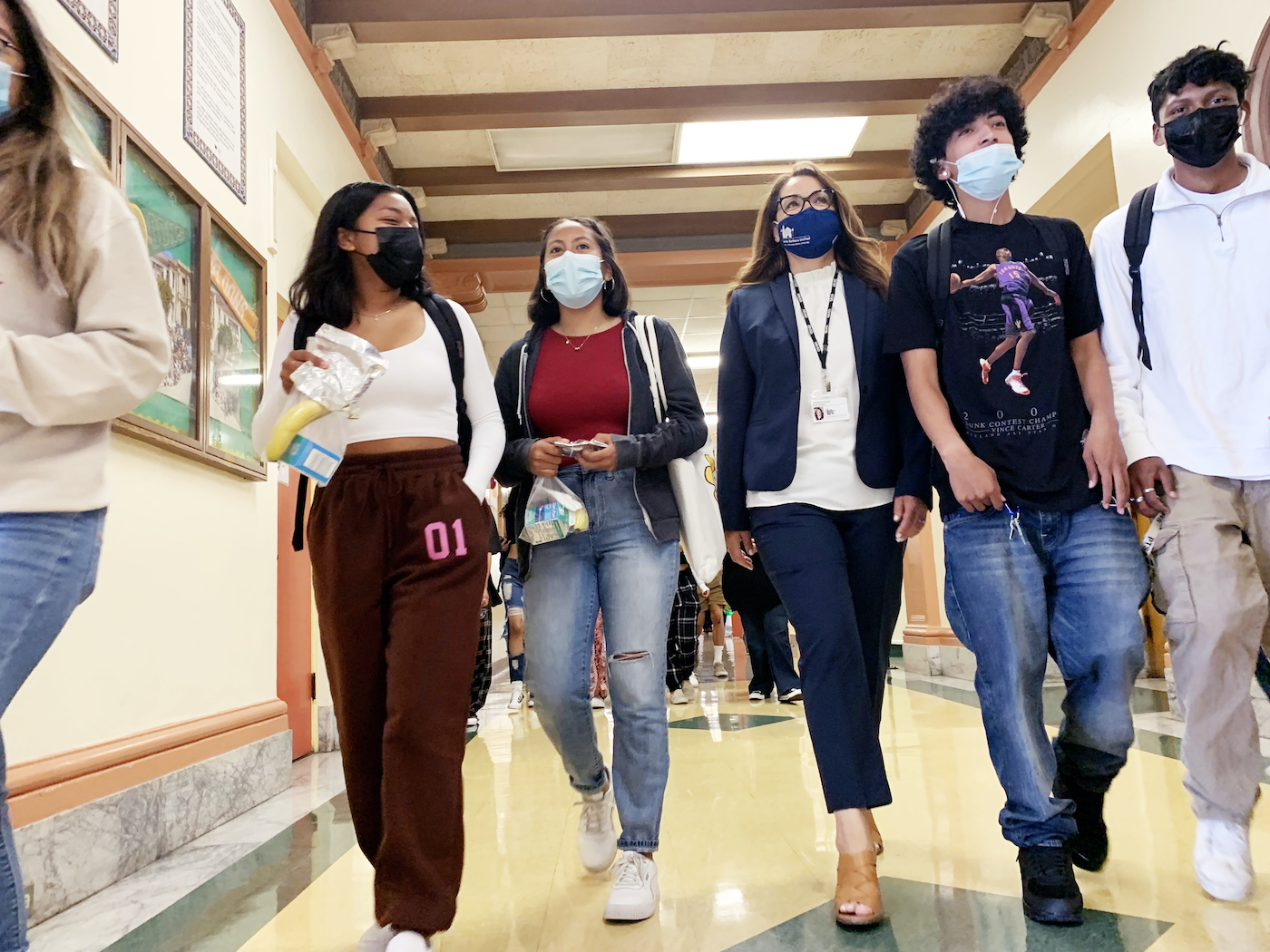A Letter of Appreciation for Our Schools

It’s autumn in Santa Barbara and the landscape is painted with a golden glow as falling sycamore leaves carpet the ground. Halloween is just around the corner. And, at long last our kids are settled back in school and ready to celebrate the season.
During these uncertain times, “back in school” has become an event to be celebrated — by students, parents, and teachers. However, most of us are unaware of the challenges our schools are facing behind the scenes. After speaking with administrators and teachers, I developed an appreciation for what goes on in all our community’s schools as they navigate the uncertain waters of the ongoing global pandemic.
Beginning any new school year is a huge step for our kids even under the most normal of conditions. With the overwhelming challenges of the see-saw ride of COVID-19, this year was an even greater transition after the relative isolation of the last 18 months. Doors opened in the middle of August for some students and continued into the first weeks of September. Diving a little more deeply to this year’s openings, things weren’t quite as simple as they might have appeared on the surface.
When schools were forced to close during the onslaught of the global pandemic, life came to a complete stop. Uncertainly swirled around like a dust devil on a deserted landscape. It seemed as if the world had stopped rotating and the things we’d known previously floated freely without structure or disappeared into space. Working parents retreated to home offices or left their jobs to be with their children, eventually becoming teachers themselves. Kids were deprived of play times with their friends and neighbors, isolated in their rooms or workspace in the company of their screens. The changes vested upon them were beyond the perimeters of this column.
Planning for the 2021-22 school year included the first full in-person, on-campus-based instruction in 18-plus months. As exciting as the prospect was, young people who’d been confined at home returned to classrooms that didn’t resemble the ones they’d left. Transitions, as we all know, aren’t the easiest for any of us, but for unvaccinated elementary kids returning to school in “pods” with social distancing, masking, and the county’s restrictions was an entirely new adventure.
How to reconnect with peers, develop renewed social skills, working together as teams in class and out, is a continuing process at all grade levels. This social and emotional realignment is superimposed on transitioning to a new grade level — or school — plus classes, after-school activities, and homework. But that is only one half of what is involved in the return to school this year.
Our last summer’s break, a normal time for fun and outdoor activities, looked quite different for school administrators, teachers, and support staff as there was much to be done. With the drop in COVID-19 cases and increased vaccinations during spring, it appeared that full-time, on-campus learning could finally happen. Teachers returned long before the opening to make adjustments and accommodations to their classrooms — educationally and physically. In order for Santa Barbara County’s restrictions to be implemented, facilities crews, business offices, and teachers worked hard to reorganize and modify the campus to the guarded, but loosened, regulations. That is, until the regulations were suddenly upended with the appearance of the Delta variant.
Imagine if you can, how difficult and frustrating it must have been — and continues to be — in conducting an entire school year in this kind of an uncertain environment. Guidelines set in place are suddenly changed or delayed within hours. Add to that additional on-campus accommodations such as air filtration systems, hand sanitizers, masks, and other COVID necessities when the demand is great and supply chains break down making items hard to get. Quarantining and safety regulations meant to ensure overall health are also in constant flux and sometimes difficult to understand. Concerned parents continue to want information about what is and what is not allowed — when to quarantine and under what circumstances. The necessary facts are usually revealed in small print that’s often difficult to comprehend and subject to change requiring constant modification. To test, whom to test, when and where and under what circumstances is subject to constant change. The tests themselves are a valued commodity — some schools don’t have access to them at all.
Each school decides how to safely handle their indoor learning environment and classroom setup, perimeters for social distancing and other mandated requirements. To mask or not to mask is no longer the question. High schoolers set masking fashion trends as I write. Teachers wear them all day, every day — remembering that a teacher’s instrument is the voice, instructing behind a face covering takes getting used to. The parameters for schools both public and private is, and continues to be, a huge undertaking deserving an educational medal of honor.
Consider this column a love letter of appreciation. Our schools, faculty, students and families’ flexibility, patience, and creativity in meeting these challenges is a testament to the strength of our community. Being once again on campus has brought much joy to teachers and students along with an increasing sense of normalcy.
Always at the helm is a mission to guide young people through the normal challenges of growing up: the need for acceptance, teacher and peer relationships, romantic involvements and academic or behavioral issues that come with discovering oneself. Their seasons turn — along with ours — as we support, reassure, and stand by our kids as they continue to evolve and grow until the Sundowner winds of their lives carry them into the future. In the meantime, there’s still work to be done — and it’s being done in Santa Barbara masterfully!






